20+ SAMPLE End of Year Report
-
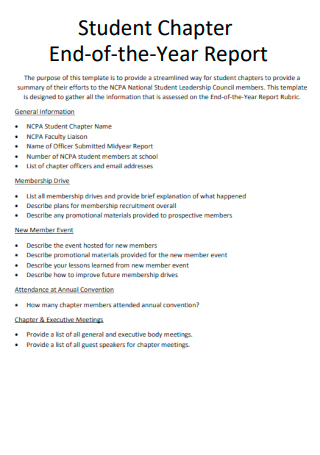
Student Chapter End of the Year Report
download now -
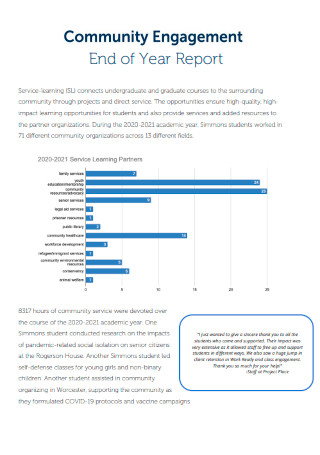
Community Engagement End of the Year Report
download now -

Budget Advisory Council Year End Report
download now -
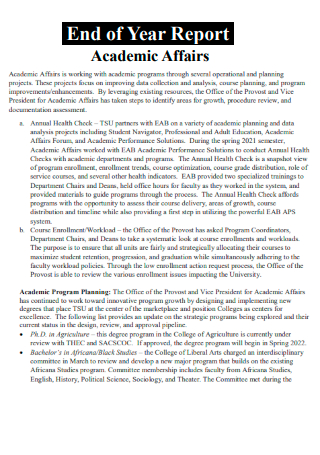
Academic Affairs End of Year Report
download now -

Year End Report Planning and Development Department
download now -

Writing Center End of Year Report
download now -

Learning & Development Year End Report
download now -
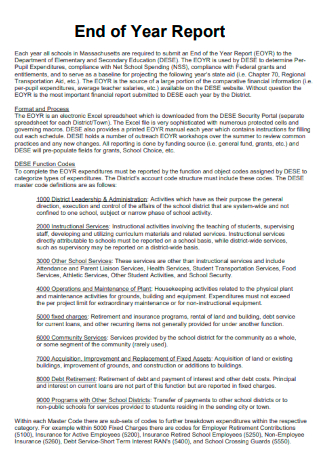
Sample End of Year Report
download now -

Unit End of Year Report
download now -
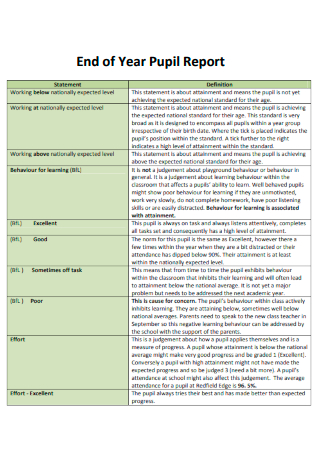
End of Year Pupil Report
download now -
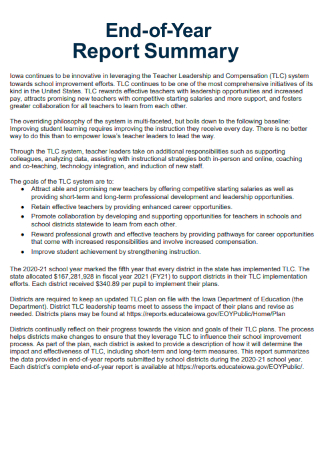
End of Year Report Summary
download now -
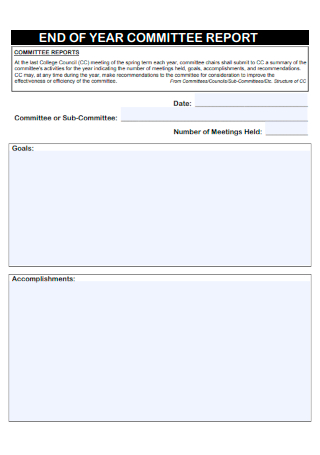
End of Year Committee Report
download now -
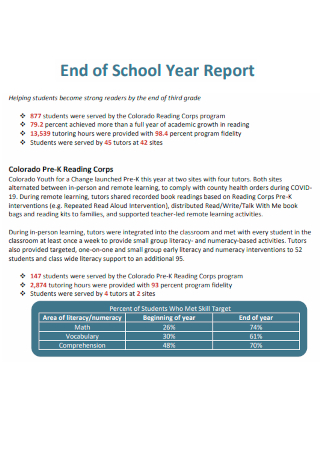
End of School Year Report
download now -
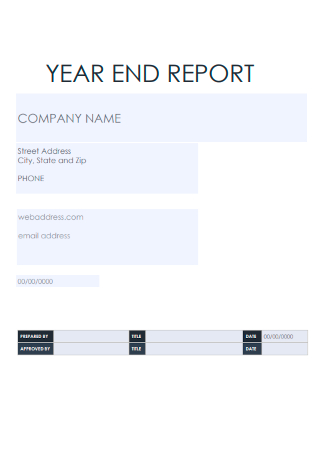
Basic Year End Report
download now -
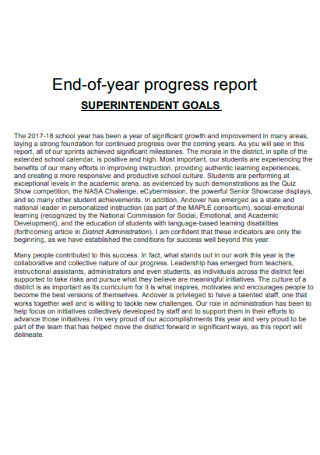
End of Year Progress Report on Superintendent Goals
download now -

Division of Student Affairs End Year Report Executive Summary
download now -
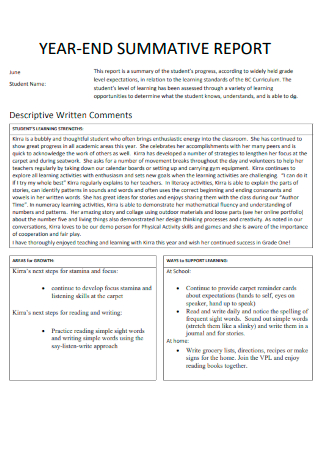
Year End Summative Report
download now -
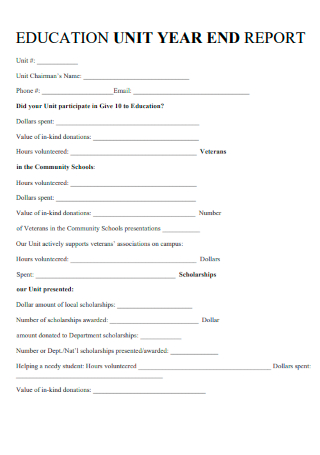
Education Unit Year End Report
download now -
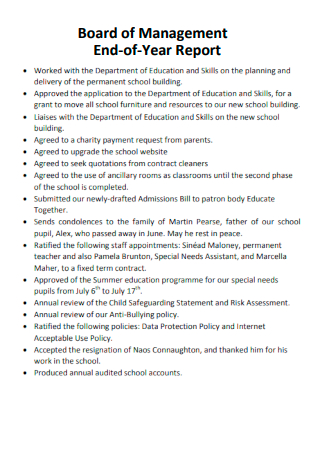
Board of Management End Year Report
download now -
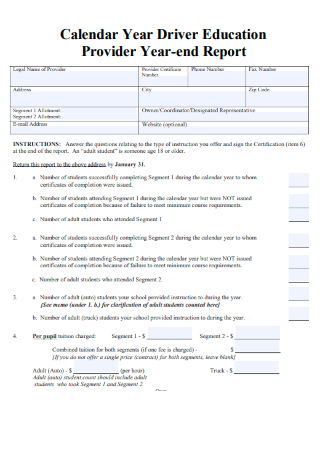
Calendar Year Driver Education Year End Report
download now -
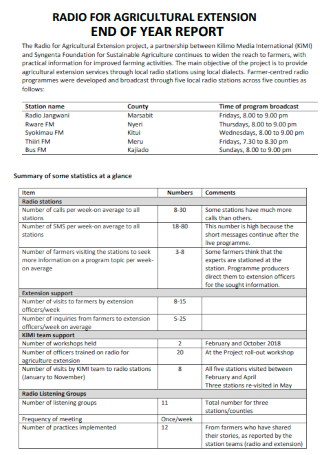
Radio for Agricultural Extension End of Year Report
download now
FREE End of Year Report s to Download
20+ SAMPLE End of Year Report
What Is an End of Year Report?
Components of an End of Year Report
How To Communicate a Powerful Story at the End of Year Report
FAQs
How do you create a good annual report?
What is a year-end statement?
How do you choose a financial year-end date?
What Is an End of Year Report?
An end of year report, also known as an annual report or a year end report, is a business document that details the activities and events of an organization throughout the preceding year. The purpose of the report is to communicate the overall performance of an organization, financial information, and all other key performance indicators that describe the business. Public or government organizations must submit the report as a part of their legal accountability to their shareholders. Collecting and interpreting data on a natural rhythm enables companies to reflect on their performance over the previous year. The information enables different organizations and companies to make accurate predictions, adjust goals and timelines, and identify the deficiencies and areas for improvement. Writing an end of year report can either be for internal or external use of stakeholders. With all things laid out, the end of year report functions similarly to a student report card. It accounts for all the performance data coming from a thorough evaluation of information from multiple sources and points of view. When creating and end of year report, you can also choose to section monthly or quarterly reports for a lower-range view of business performance.
According to the homepage of AnnualReports.com, they hold over 112 thousand annual reports from more than nine thousand global companies. The list includes reports from different organizations, including Primerica Inc., Hess Corporation, CIT Group Inc., and Black Hills Corporation.
Components of an End of Year Report
The end of year report or annual report remains an integral part of business and corporate reporting. Since the context and content of the report still stem from legal requirements, the components of the end of year report vary from one industry to another. Many of the annual reports that companies produce contain a fundamental overview of the organization from the previous year. The section below covers the various components that the end of year report typically contains to deliver the production and performance information for internal or external affairs.
How To Communicate a Powerful Story at the End of Year Report
An end of year report is a vital element that showcases a brand’s transparency and accountability. Instead of composing targeted and ponderous documents, organizations and companies aim to produce a report that resonates with a broader group of individuals. The report plans to communicate the values and goals that the brand has. Construct creative annual reports that utilize pleasing visual representations and are narrative-driven. Doing so helps businesses to connect and form relationships with stakeholders, investors, and consumers. The section below details how individuals can create a compelling narrative for their end of year report.
-
1. Choose the Right Format To Produce the Report
Annual reports matured and evolved over the past years. Most yearly reports from decades ago follow specific formats, making them bland and plain. There are different ways to deliver the end of year report through an engaging and exciting way to tell the brand story. As such, the organization must select the best format to use. The point of creating an end of year report is to showcase the achievements and accomplishments of the brand. As such, the audience and the company’s product, services, and brand mission influence the format the organization chooses. Print annual reports are the most user-friendly. They are straightforward. The digital format provides an organization to get more creative. Digital content also has the advantage of easy sharing, which allows more individuals to engage with the report. Interactive content, on the other hand, encourages individuals to engage with the content the organization has. Interactive annual reports are effective if the company has large data sets.
-
2. Develop an Effective Narrative For the Report
There is plenty of valuable information that is available at the end of year report, and without proper presentation, the entire report goes to waste. Remember that the annual report must communicate the brand story effectively. The author of the report must find a core narrative for the annual report. In this way, it is easier to craft the report, making its contents easier to digest for readers and showcasing the brand story in a positive light.
-
3. Demonstrate the Brand Impact and Humanize the Work
Creating an annual report provides an opportunity to highlight company accomplishments, build trust with the organization, and demonstrate success to shareholders. The goal is to make an emotional attachment and impact consumers and stakeholders to invest in the company. Utilize data, consumer testimonials, customer feedback, reviews, and stories to provide context to the information in the document. Nowadays, consumers expect transparency from companies. It must speak to people about how the brand is unique and its identity. When crafting the annual report, find opportunities to humanize the brand. Use images that speak about people, and incorporate interesting and effective quotes that showcase the organization.
-
4. Create Visual Information with Factual Numbers
If the end of year report deals with large data sets in numbers, make sure to supply data visualization tools as it is an effective form of communication while keeping the work visually pleasing to the audience. Presenting information is crucial to the annual report, so incorporate best design practices. The author can include callouts or any other additional context to ensure that readers understand the significance of the data sets the organization provides.
-
5. Implement and Follow Best Design Practices
The visual elements that are in the report influence how the organization tells its story. The visual elements that the author includes in the end of year report affect how readers view and interpret the information of the report. Think about how to use the design element to enhance the reading experience. It also pays to choose a visual theme according to the core narrative the company wants to deliver. Make sure that the visual elements in the report still reflect the brand identity.
-
6. Use the Element of Surprise To Your Advantage
Make the end of year report memorable to readers by incorporating delightful images, stories, and experiences in the report. The organization can even opt to include freebies together with the annual report. No matter what the company chooses to do, it must be within the company budget. The report is the opportunity that the company needs to make it stand out and to make a bold statement.
FAQs
How do you create a good annual report?
Remember that the annual report is a chance to share what makes the company unique. The company can introduce and illustrate stories, use photography materials boldly, showcase various multimedia elements, and adopt multiple formats.
What is a year-end statement?
A year-end statement or an IRS tax form 1908 is a status update on a mortgage payment. It contains information about the mortgage, including the interest rate, points, and property taxes.
How do you choose a financial year-end date?
Most companies choose their fiscal year-end dates based on seasonal fluctuations of the operating business and the availability of resources.
Creating an end of the year report or an annual report helps the company reach out to its stakeholders and shareholders about what makes them unique in comparison to its competitors. The contents of the annual report must provide sufficient background information about the organization. It also talks about the financial health and status and business performance to determine whether or not investors and customers will invest in the organization. Create a compelling, creative, and informative end of year report by downloading from the 20+ SAMPLE End of Year Report in PDF templates when you visit Sample.net.
